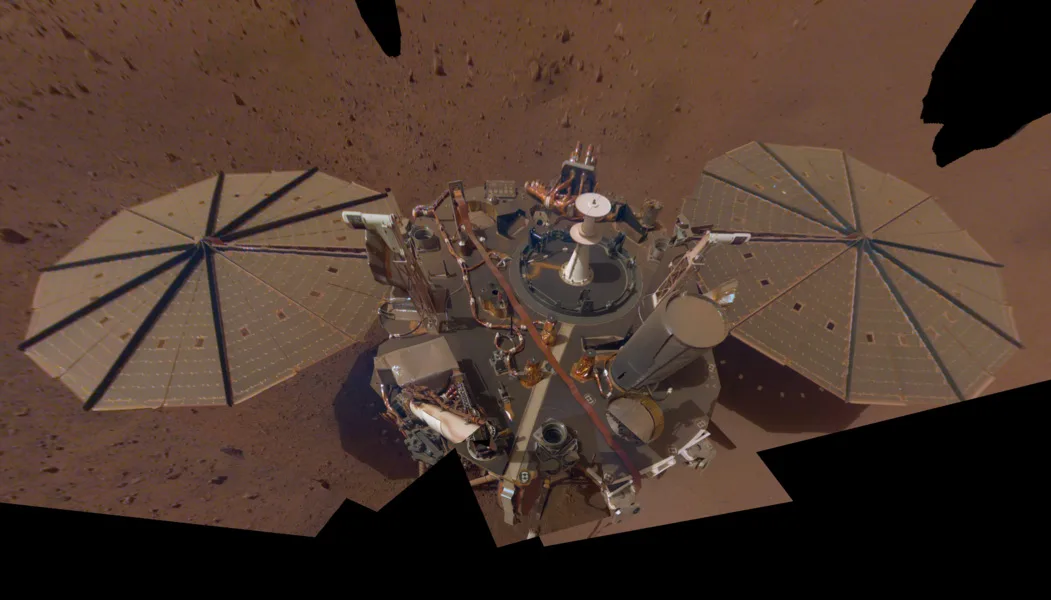
NASA's InSight lander falls silent, ending its 4-year hunt for marsquakes
"Yes, it's sad to say goodbye, but InSight's legacy will live on, informing and inspiring."
After four years on Mars, NASA's InSight mission has ended.
Since November 26, 2018, the InSight lander has been sitting (mostly) quietly in a vast Martian plain known as Elysium Planitia. Its mission: to give scientists their very first glimpse at the interior structure of Mars.
Over close to 4 years, InSight's sensitive seismometer detected over 1,300 marsquakes. Just as earthquakes allowed researchers to discover the size and basic composition of Earth's core, mantle, and crust, these Martian tremors provided a similar picture of what the Red Planet looks like below the surface.
However, as of December 18, 2022, NASA has lost contact with InSight.
Due to a thickening layer of dust on the lander's solar panels, its power levels have dwindled to critical levels. It was only a matter of time before it would no longer have enough energy to communicate with Earth. Now, it appears that day has come.
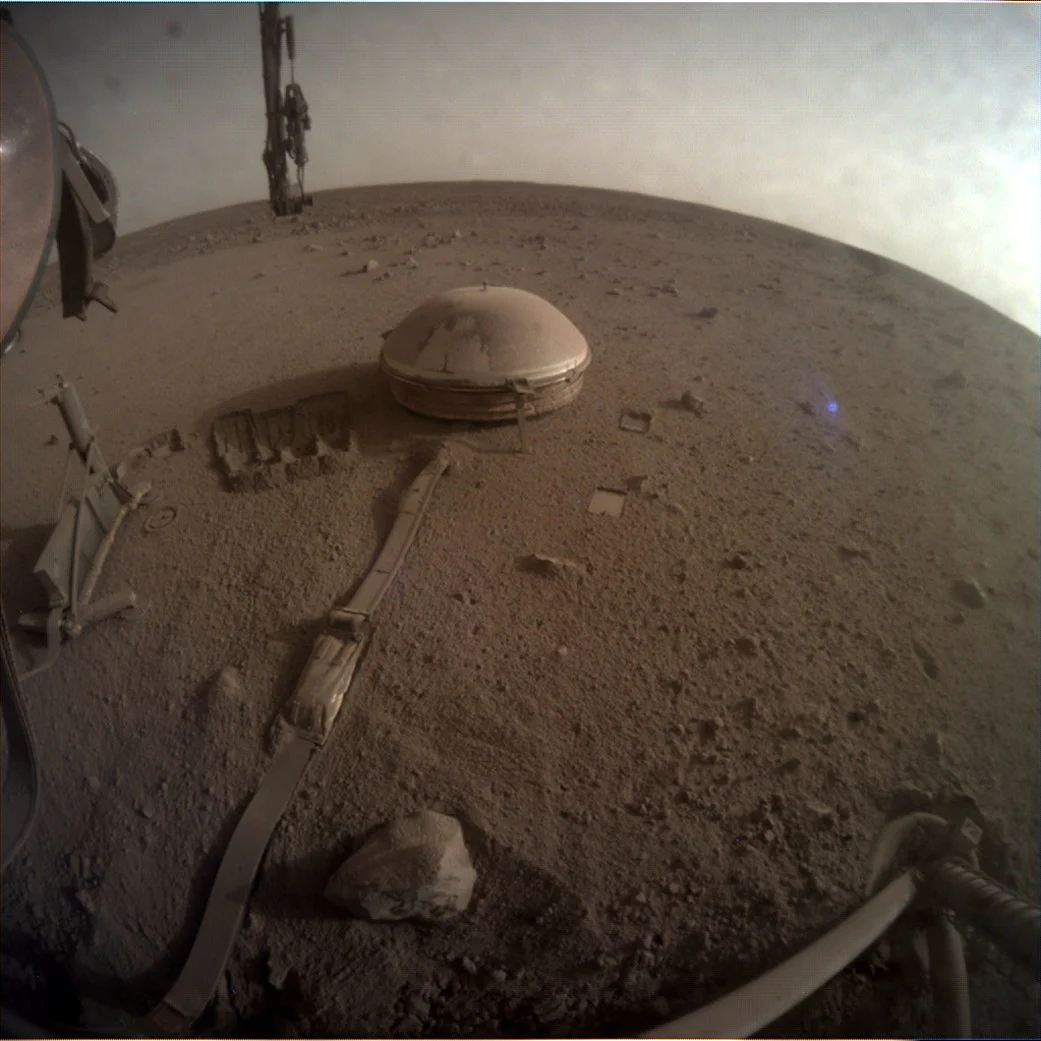
NASA InSight's final snapshot, taken by the lander's Instrument Context Camera, on December 11, 2022. Credit: NASA/JPL-Caltech
On December 21, NASA officially declared the end of InSight's mission.
"We've thought of InSight as our friend and colleague on Mars for the past four years, so it's hard to say goodbye," Bruce Banerdt, the InSight principal investigator at NASA's Jet Propulsion Laboratory, said in the statement. "But it has earned its richly deserved retirement."
InSight's primary mission, to reveal the interior structure of Mars, was a complete success.
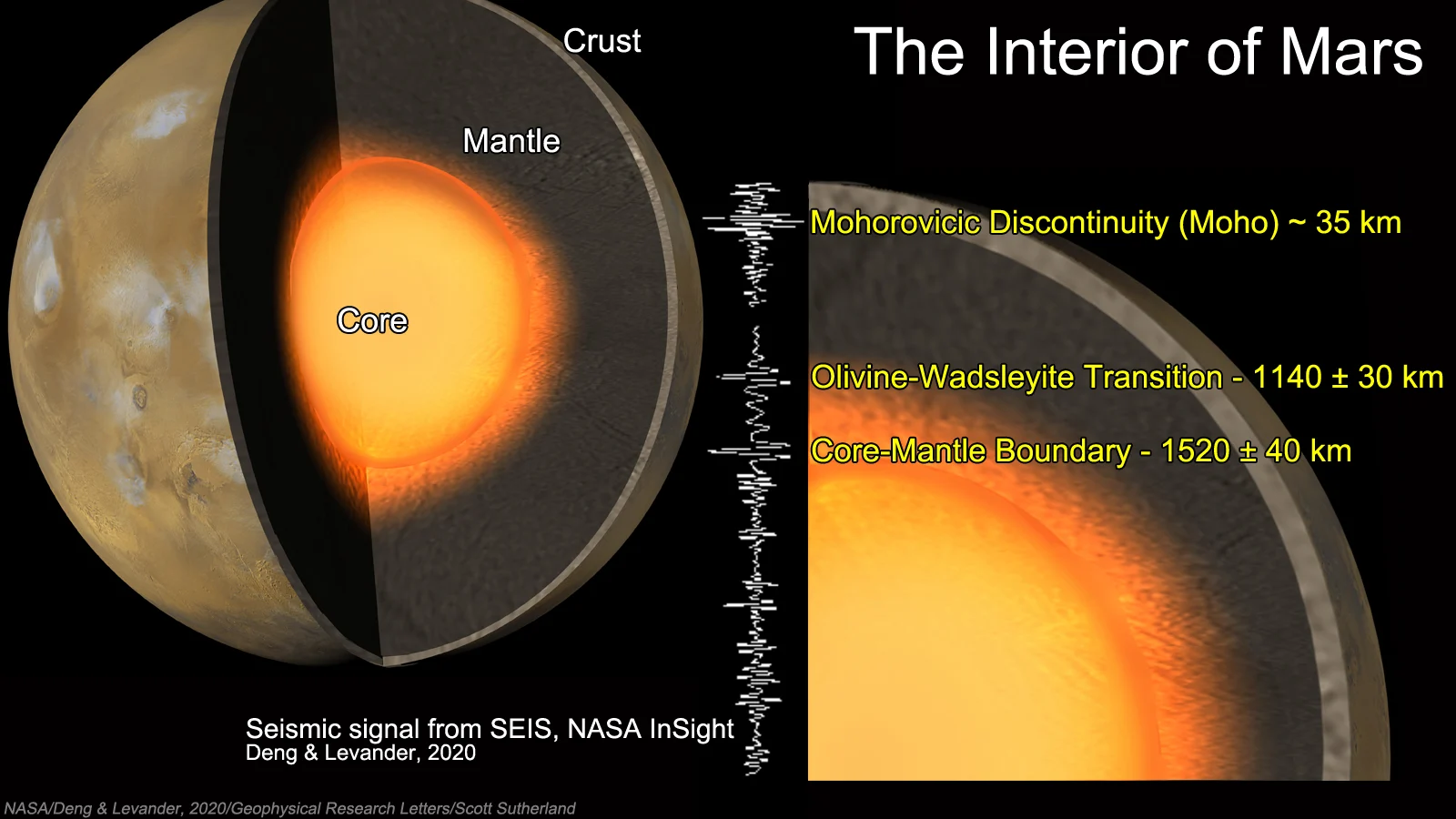
An artist's impression of Mars' interior (left) is compared to InSight seismometer data (center), to show the boundaries of the planet's interior structure (right). Credit: NASA/Deng & Levander, 2020/GRL/Scott Sutherland
At the same time, it furthered our understanding of Martian weather, and a few of the marsquakes it detected led to the discovery of fresh asteroid impact craters on the surface.
Read more: New impact crater on Mars uncovered 'hidden' cache of ice
The only part of the mission that failed to deliver as hoped was "the mole" — the heat probe that attempted to hammer down a few metres below the surface of the mission landing site. It was meant to measure how heat flows from the interior of Mars to the surface. However, it encountered difficulties in accomplishing that mission.
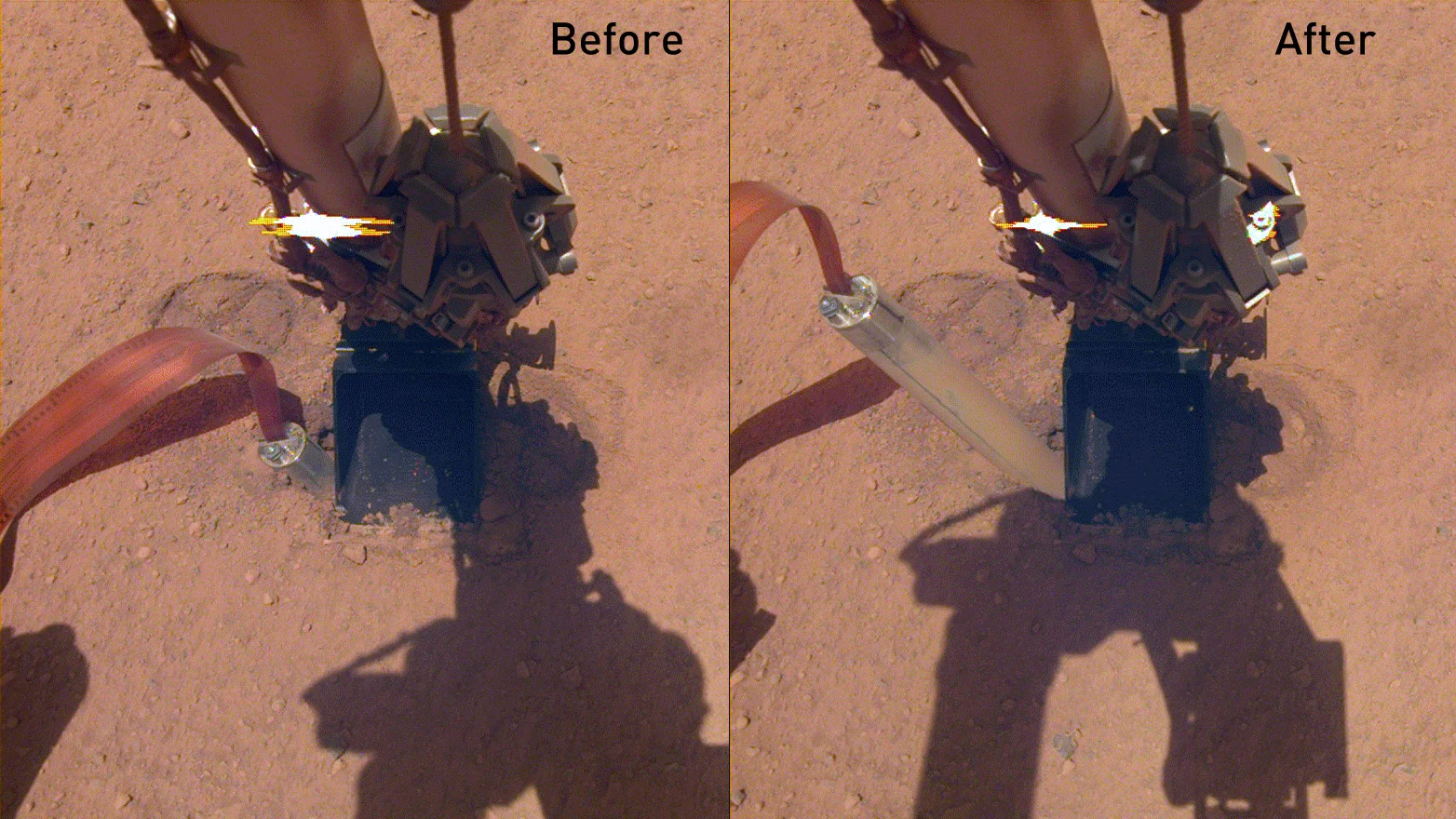
Two views from InSight's Instrument Deployment Camera, on the lander's arm, show how the mole climbed back out of the hole it was attempting to drill. Credit: NASA/JPL-Caltech
Due to the very unusual soil it encountered during the attempt, the mole only managed to drill down just below the surface. Despite that setback, the probe still returned valuable science!
According to NASA:
Designed for the loose, sandy soil seen on other missions, the mole could not gain traction in the unexpectedly clumpy soil around InSight. The instrument, which was provided by the German Aerospace Center (DLR), eventually buried its 16-inch (40-centimeter) probe just slightly below the surface, collecting valuable data on the physical and thermal properties of the Martian soil along the way. This is useful for any future human or robotic missions that attempt to dig underground.
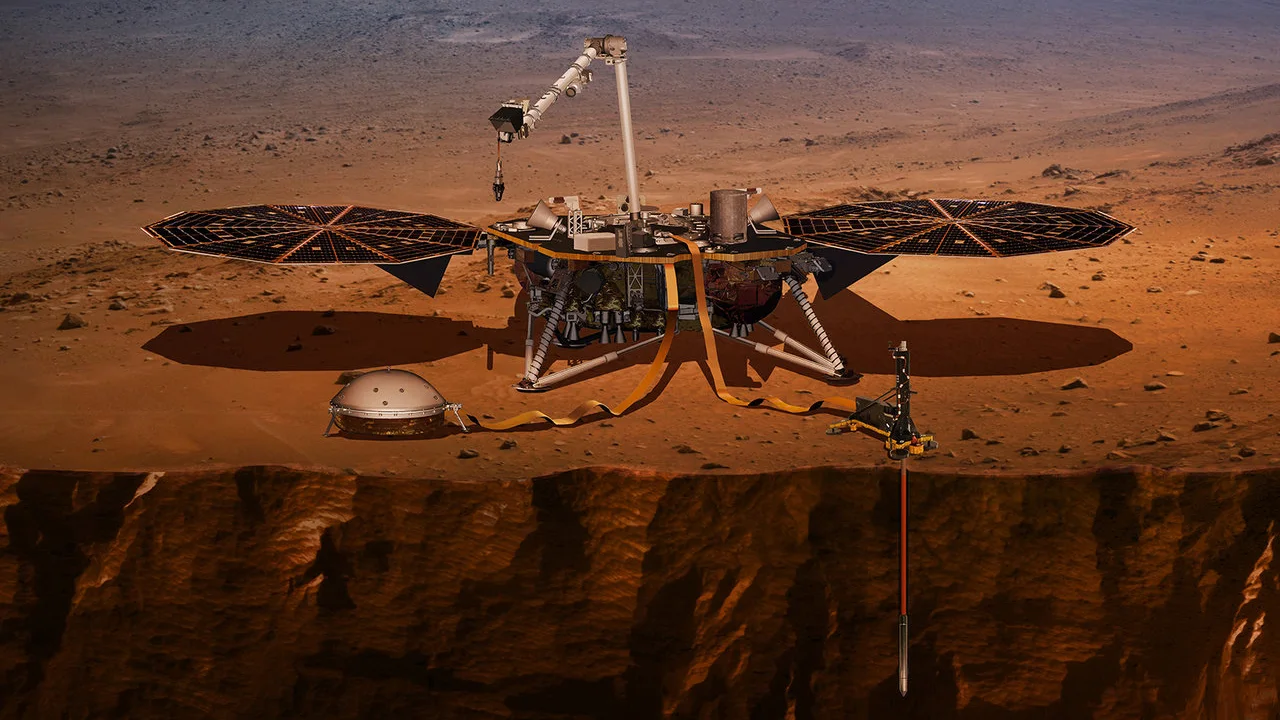
This artist's impression of the mission shows InSight on the surface of Mars, with its seismometer and heat probe fully deployed. Credit: NASA
"InSight has more than lived up to its name," Laurie Leshin, the director of NASA's Jet Propulsion Laboratory, said in Wednesday's announcement. "As a scientist who's spent a career studying Mars, it's been a thrill to see what the lander has achieved, thanks to an entire team of people across the globe who helped make this mission a success."
"Yes, it's sad to say goodbye, but InSight's legacy will live on, informing and inspiring."











